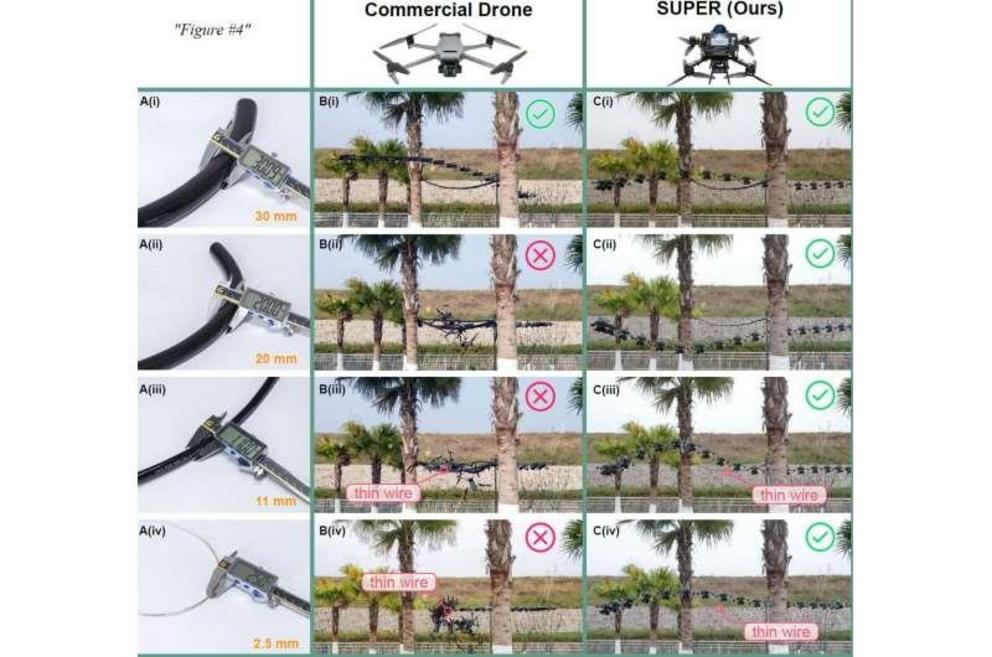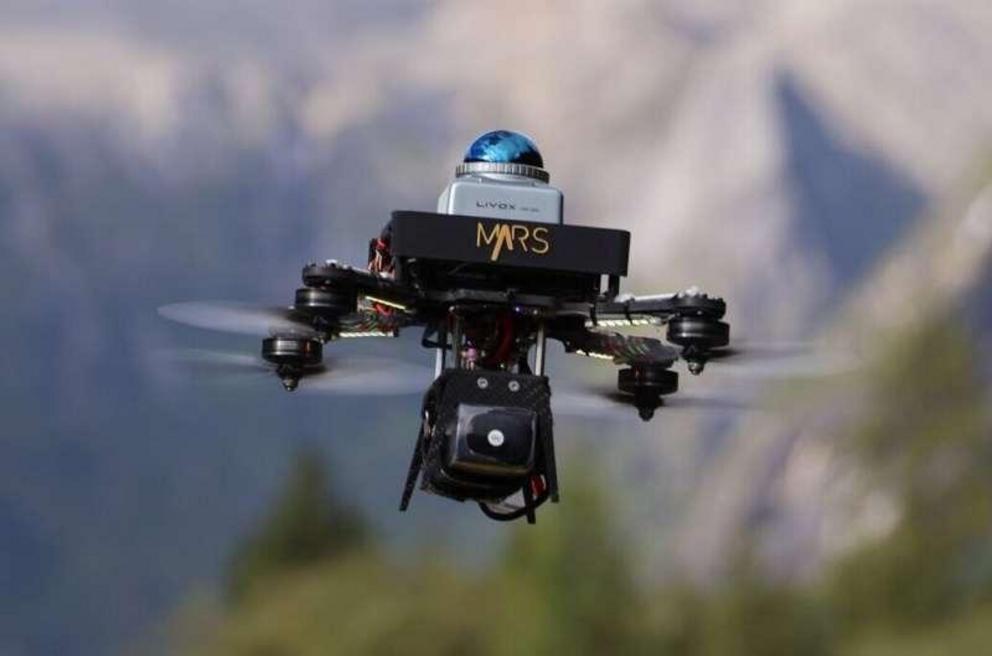See SUPER in action: aerial robot can navigate unknown environments safely at high speeds
Safety-assured high-speed aerial robot.
A team of engineers and roboticists at the University of Hong Kong have designed, built and tested an aerial robot capable of navigating unknown environments safely at high speeds while avoiding obstacles. In their paper published in the journal Science Robotics, the group describes how they overcame problems encountered by others attempting to build similar robots and how well their quadcopter robot, called SUPER, performed during testing.
Roboticists have been trying for several years to build a flying robot that could perform like birds—moving safely at high speeds while adjusting to unknown conditions as they arise, such as encountering gusts of wind, power lines, tree limbs or other objects appearing suddenly in their path.
An overview of the proposed SUPER system. SUPER demonstrates its ability to safely navigate through unknown, cluttered environments at high speeds; avoid thin obstacles like power lines; and perform robustly in various scenarios, including object tracking and autonomous exploration.
Most such flying robots have relied on various types of sensors and cameras that had to process massive amounts of video data, slowing the speeds at which they could operate. In this new effort, the researchers in Hong Kong say they have finally overcome these challenges.
The secret behind their success, the team claims, is their use of 3D light detection and ranging LiDAR, rather than traditional cameras and sensors—technology that gives it real-time feedback for distances up to 70 meters in all directions.
Safe high-speed navigation in unknown environments.
The LiDAR data, they note, is fed to an onboard computer that uses the information to provide a continuous two-trajectory strategy to plot the flight path of the robot in real time. The two trajectories offer the option of taking the safest route versus an exploratory route—software on the computer moves between the two trajectories to provide the optimal path.
 Demonstration of thin object avoidance. (A) (i to iv) Four thin wires of varying diameters were used in the experiments. (B) (i toiv) Time-lapse images capturing the flights of DJI Mavic3. It successfully avoided the thin wire of 30-mm diameter but failed
Demonstration of thin object avoidance. (A) (i to iv) Four thin wires of varying diameters were used in the experiments. (B) (i toiv) Time-lapse images capturing the flights of DJI Mavic3. It successfully avoided the thin wire of 30-mm diameter but failed
Testing showed that SUPER could safely fly through an obstacle course at 20 meters per second. The research team also found that it could follow a target, such as a human being, as it made its way through a forest, successfully avoiding trees, branches and other obstacles it met. They also found that because it is based on LiDAR, it can operate in low-light conditions as well.
Applications of SUPER in Object Tracking, Autonomous Exploration, and Waypoint Navigation Missions.
The research team suggests SUPER is a major step forward in autonomous aerial robot technology—one that could be used for search and rescue applications, though it appears its most logical applications would be law enforcement and military reconnaissance.
Demonstration of SUPER’s ability to avoid thin obstacles.
Navigation in cluttered environments.
More information: Yunfan Ren et al, Safety-assured high-speed navigation for MAVs, Science Robotics (2025). DOI: 10.1126/scirobotics.ado6187
Journal information: Science Robotics
Video can be accessed at source link below.

